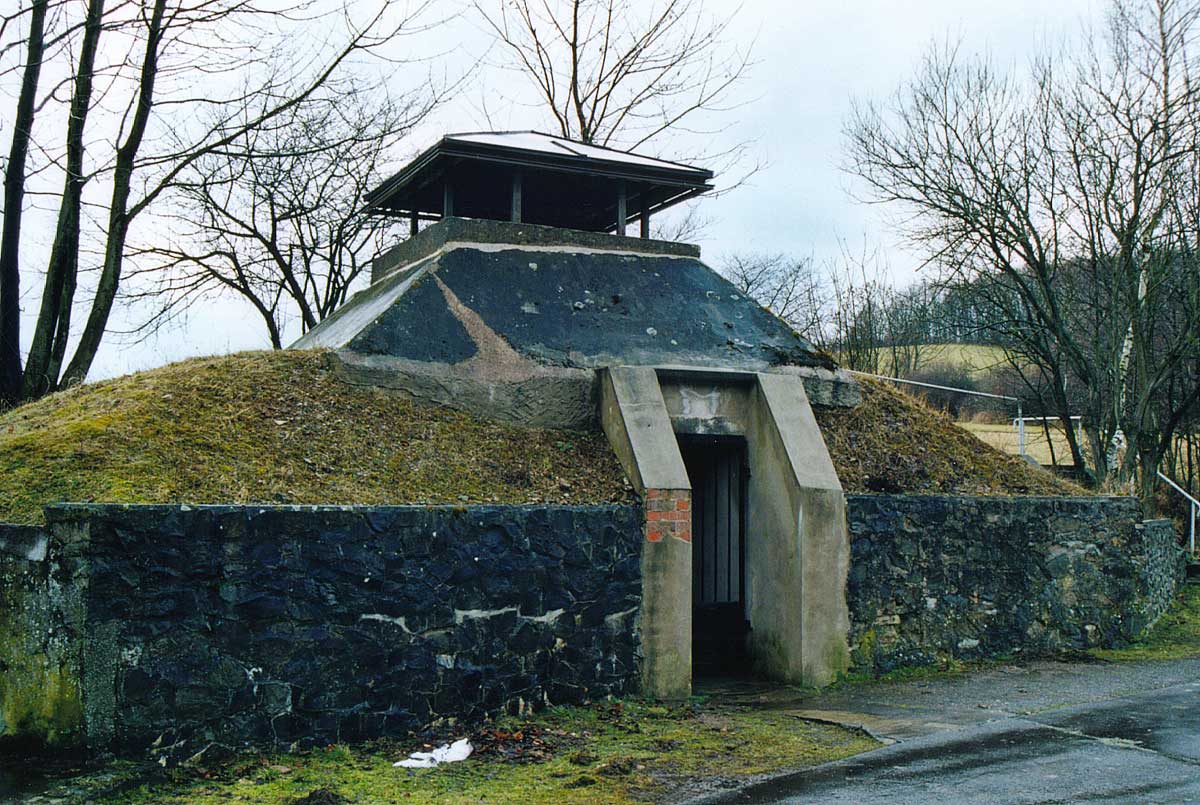Mattogno wrote:Drei gasdichte Türme One reads in the letter of 31 March 1943 from the Zentralbauleitung to the Deutsche Ausrüstungswerke:
"Es wird auf c.a. Schreiben mitgeteilt, dass drei gasdichte Türme gemäss des Auftrages vom 18.1.43 für das Bw 30 b und c auszuführen sind, genau nach den Ausmassen und der Art der bisher angelieferten Türme." [56]
There is still in existence a carbon copy of this same document in which the first occurrence of "Türme" is corrected in ink to "Türen." [57] It is not known who made the change.
Crowell considers as "unconvincing" Pressac's explanation that Gastürme "is a misspelling for Tür and that this is a reference to 'three gastight doors' " (p.27). He asserts
"in Technique we argued that this was probably a reference to three gastight ventilation chimneys, another common object in the civil air defense literature" (p. 27)
and concludes his explanation thus:
"Document 29 presented a picture of a Luftschutz-Verschlüss, or gastight ventilation chimney, of the kind used for the known trench shelters at Auschwitz. Other documents also indicate that gastight chimneys were common at Auschwitz for gas protection. Certainly, such gastight ventilation chimneys could be described as 'gasdichte Türme', and we remain confident in our interpretation of this trace" (p. 27).
This explanation is totally inconsistent in that it is based on the absolutely arbitrary supposition that "such gastight ventilation chimneys could be described as 'gasdichte Türme'. The "proof" of this alleged terminological equivalence is just an adverb: his own "certainly"!
In order to support this arbitrary assertion Crowell has recourse to a trick: his "document 29" does not in fact present a "Luftschutz-Verschlüss," but a "Gasdichte lüftungsrohrverschlüsse" (see document 15) [58] , so that the "ventilation chimneys" that Crowell speaks of were actually called "Lüftungsröhre," certainly not "Türme." On the other hand, the ventilation chimney of Krema II and Krema III was called a "Schacht" ("Entlüftungsschacht"). So to claim that the "gastight ventilation chimneys could be described as 'gasdichte Türme' " is false and foolish.
Illustration 15
"Gasdichte Lüftungsrohrverschlüsse", not "Luftschutz-Verschlüss"
In "Technique and Operation of German Anti-Gas Shelters in World War Two" Crowell writes:
"We observe the drawings of Crematoria IV and V with their shuttered cupolas surmounting the roof, and might easily conclude that they are the same thing: however, it appears that the extermination gas chambers were at the opposite end of the building. But this end of the buildings also had chimneys, although much smaller ones. Our conclusion is that Türme are references to gas tight chimneys of some kind: the idea, offered by Pressac, that Türme was a stenographic error, even though it was repeated four times seems very strained"(p. 34).
He then makes another gross blunder, mistaking chimneys attached to two ovens for ventilation chimneys! [59] .
This being cleared up, let us see what the "gasdichte Türme" were. The following request dated 19 February 1943 appears in the Schlosserei documentation:
"19.2.43. Nr. K.G.L. BW. 30 b. Przedmiot [object]: 4 dichte Türen, mit Tür futter - lt. Angabe der Bauleitung Ausmass 100 x 205 cm i.l. Auftrag Nr. 2261/:80/17:/ vom 18.1.43 der Zentralbauleitung. Von der ehme. [= ehemaligen] Häftl. Tischlerei übernommen." [60]
The above-mentioned letter of 31 March 1943 has for object (Betrifft): "Auftrag 2261/80/17 vom 18.1.43 Bw 30 b". Therefore it was about the very same job that concerned not "Türme," but "Türen" of 100 x 205 centimeters. So on this score Pressac is perfectly right while Crowell has made another big blunder.
Carlo Mattogno, The Samuel Crowell bomb shelter thesis: a historically unfounded hypothesis. 



